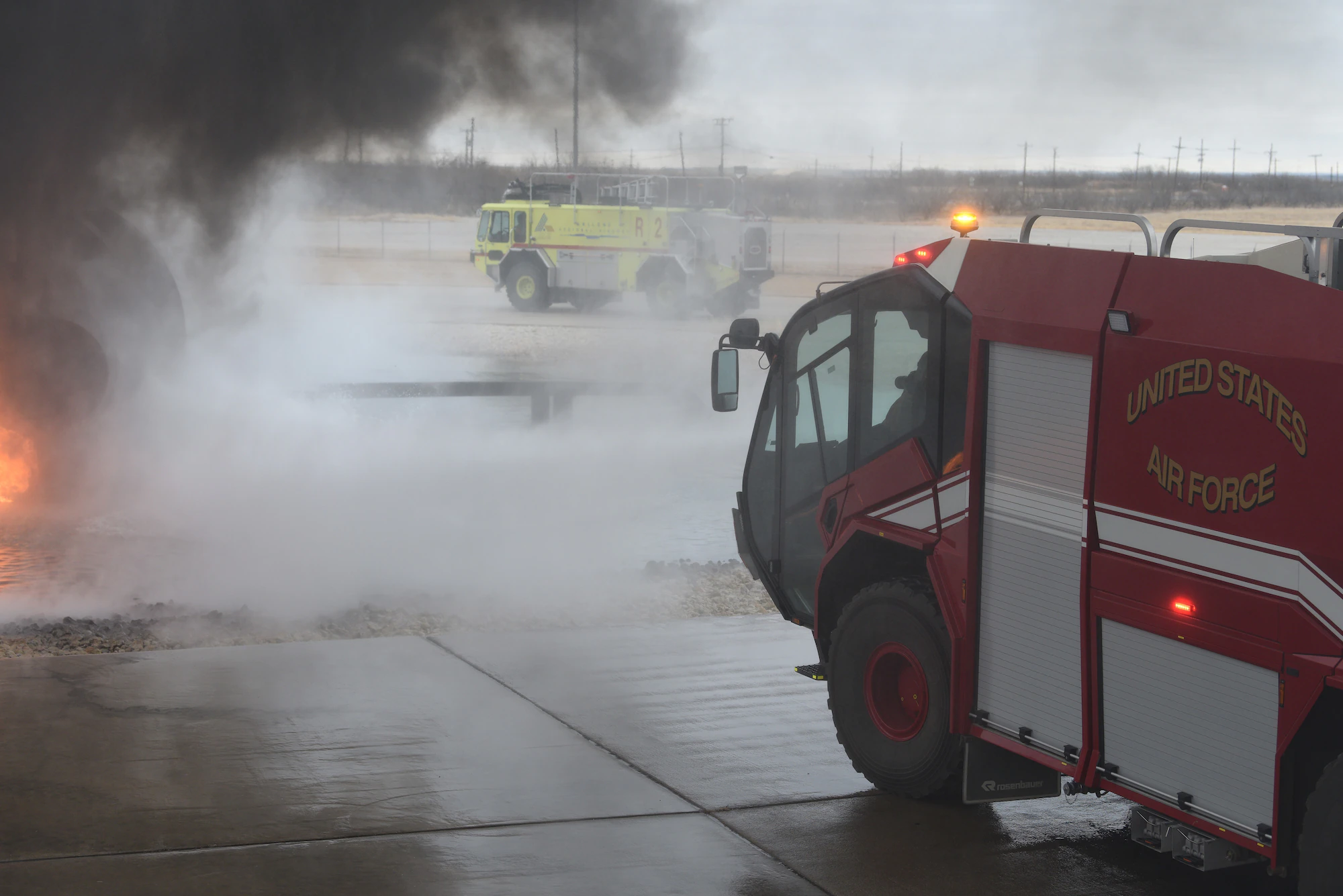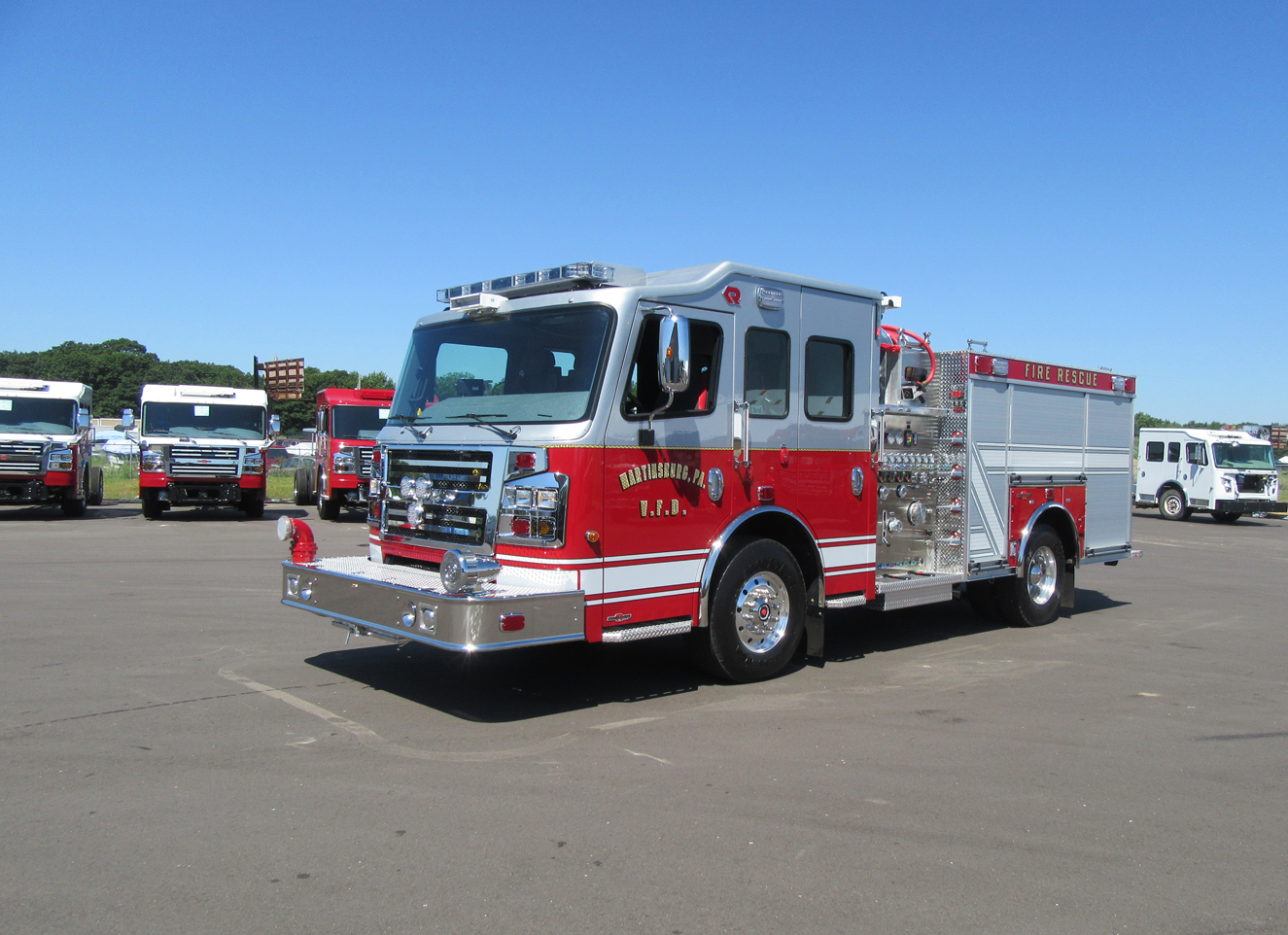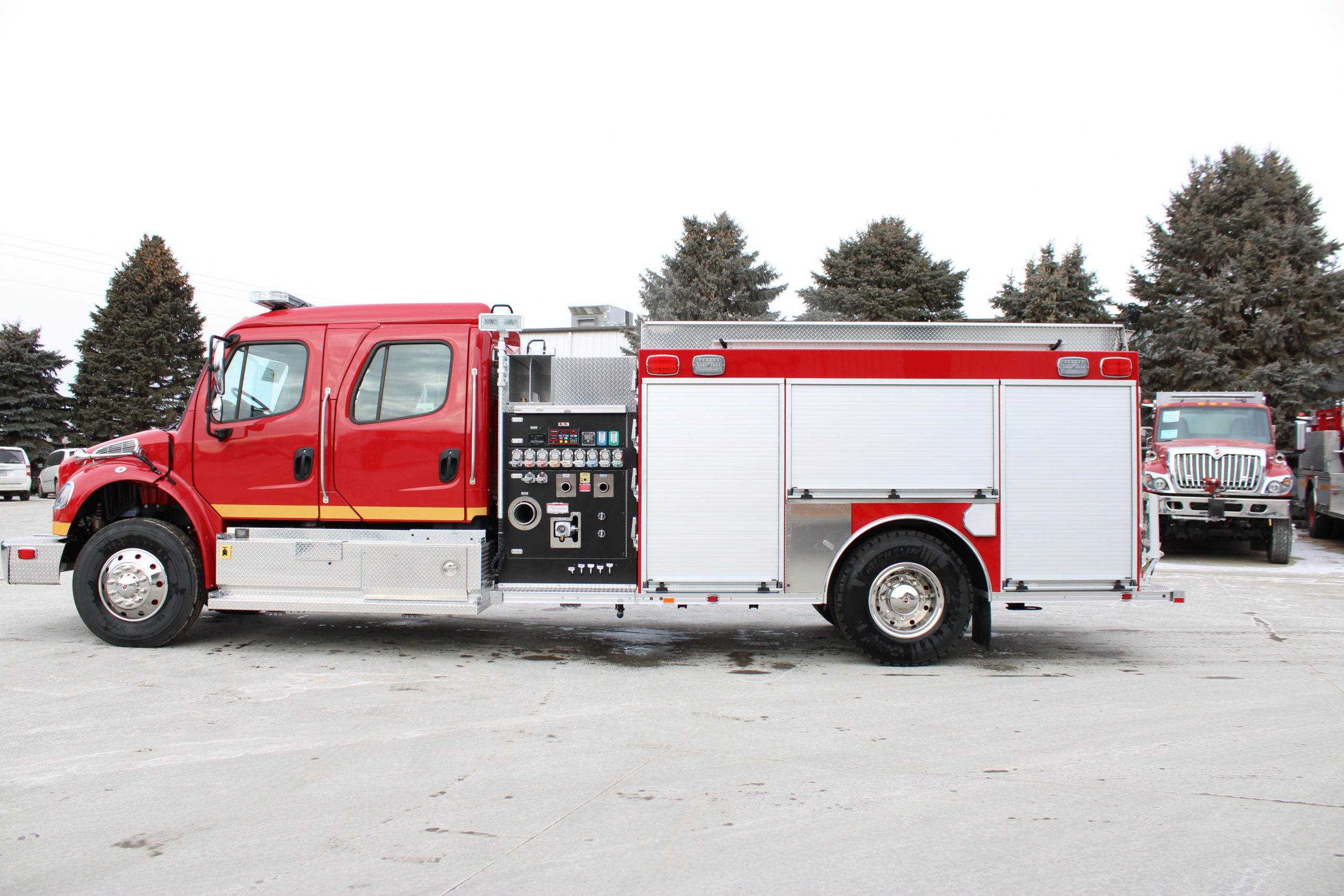DYESS AIR FORCE BASE, Texas —
Commentary by Chief Master Sgt. Charles Clawson.
As the Air Force modernized its aircraft and rescue firefighting vehicle fleet with ultra-high-pressure vehicles, many firefighters across the career field did not jump on board with the new technology.
There were many criticisms of the vehicle, some calling it a mistake to procure. One of the criticisms was that UHP water streams did not hold up in windy conditions, nor did they knock down the heat as the old vehicles did. The fire department at Dyess Air Force Base was no different.
The 7th Civil Engineer Squadron Fire and Emergency Services Flight’s ARFF vehicle fleet consists of one 500-gallon rapid intervention vehicle, two 3,000-gallon UHP Rosenbauer Panthers and one 1,500-gallon traditional high volume ARFF vehicle.

The Dyess AFB F&ES flight received the two Panthers in 2020. With URF vehicles making up 81% of its fleet, the department had several issues to overcome. First, no ARFF tactics were available on how firefighters could effectively use the technology. Second, personnel did not trust the equipment to do what it needed to do in an actual emergency. And third, firefighters were still operating with the same tactics developed 20-30 years ago for vehicles with lower pressures and much greater volumes.
The poor performance of the vehicles continued during JP-8 live-fire aircraft training. Flight leadership and operators knew the new trucks were not going anywhere anytime soon, and things had to change.
To make change happen, the department started to develop new tactics that best fit their operation with their given vehicle set.
In early 2021, the Dyess Fire Department began conducting two aircraft live-fire evolutions every month. Personnel tried new tactics and techniques, challenged past tactics, and even discarded several of them. They listened to everyone’s ideas, worked on a plan to implement them, and adjusted where needed.
When the department felt they had a good plan, different crews and shifts tried it, tested it and challenged it. Airmen would find holes in the tactic, make corrections, and continuously improve the process until it became effective. The fire chief, airmen, and everyone in-between started to feel confident with the new equipment. They began to believe they could rapidly control any fire with the UHP systems.
The Airmen completed all training without foam. Several stated, “If we can do this with just water, imagine how effective it would be with foam.”

The department learned a couple of lessons as they developed a new way to fight fires. First, a fully involved JP-8 pit fire cannot be fought with a hand line. Instead, firefighters have to hit the fire hard as they approach the turret, then dismount and advance hand lines for mop-up and conduct interior operations. Second, crews have proven the Rosenbauer Panthers 3,000-gallon UHP will quickly control and often wholly suppress a JP-8 fire. They proved this during several live-fire training evolutions and multiple real-world brakes and hydraulic fires.
Where did all these lessons take them?
At approximately 10:03 p.m. on April 20, Dyess AFB F&ES was dispatched to a reported B-1 aircraft fire. The first ARFF unit arrived on the scene at 10:05 and witnessed the entire aircraft’s left side on fire with flames extending 50-75 feet into the air. As Crash-44, a 3,000-gallon UHP Panther crew, approached the front of the aircraft, they discharged water directly at what appeared to be the main seat of the fire, the No. 1 engine. A few seconds later, Crash-33, the other 3,000-gallon UHP Panther crew, approached the front of the aircraft and positioned between Crash-44 and the fuselage, and utilized the bumper turret to begin pushing the flames away from the fuselage and attacking the ground fires. Crash-5, an RIV crew, positioned themselves at the aircraft’s rear to push flames away from the fuselage and extinguish ground fires.
All crews, especially Crash-44 and Crash-33, immediately noticed the effectiveness of the turrets while using water only and determined there was no need to activate the foam systems. They also noted that minimal radio communication was necessary during the initial operation. The muscle memory developed during the previous training allowed crews to make appropriate and practical decisions based on incident priorities and actions of previous crews in accordance with the department’s updated standard operating procedures.
Chief-2, the incident commander, immediately contacted maintenance personnel, determined rescue was not a concern, and directed Engine-12, a structural response team, to provide medical aid to two injured maintenance personnel. Crash-14, a standard 1,500-gallon ARFF, was staged but not utilized. At 10:10, seven minutes later, firefighters had extinguished all the fire. Chief-2 requested the water status of all vehicles, and all reported they were still over half full.
The firefighters at Dyess AFB have a new outlook on the effectiveness of UHP vehicles. Their new tactics have shown their capability to extinguish a major fire in minimal time, even without foam. UHP is here to stay, and with new confidence in what the equipment can do, the firefighters at Dyess AFB have no worries about being able to save an asset and ensure the flying mission continues at America’s only Lift and Strike base.




